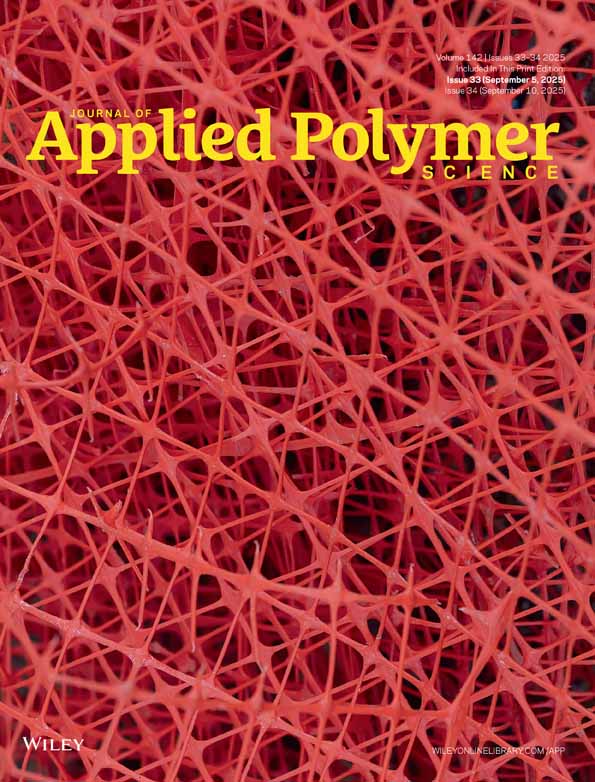Crack propagation behavior and toughness of V-notched polyethylene terephthalate injection moldings
Abstract
The role of the skin and core regions in controlling the effects of V-notches, on the fracture behavior of PET injection-moldings, was correlated with their tensile and impact properties. Investigations revealed that there were three distinct fracture behaviors: ductile, semiductile, and brittle fracture transitions. The notch sensitivity factor for strength (KS) in the ductile and semiductile transitions indicates that the fracture strength was not sensitive to ≤1.5 mm deep notches, which is considered the skin region. The introduction of core-deep notches (>1.5 mm) resulted in a rapid increase in KS. On the other hand, the notch sensitivity factor for energy (KT) shows that the fracture energy was not sensitive at ≤0.5 mm deep notches. However, KT increased drastically when notches >0.5 mm deep were introduced. The development of an anisotropic skin-core structure in injection moldings is well acknowledged. This is revealed in a constant fracture behavior between 0.6 and 1.0 mm deep notches. Notably, there was a drastic change in the fracture pattern from ductile to semiductile at a critical 0.6 mm deep notch. The specimens experienced a mixed fracture behavior at 1.5 mm deep notch, which marks a transitional fracture pattern at the interface between the skin and core regions. Lastly, a constant fracture behavior was observed at notch depths ≥1.5 mm. Results show that crack opening, in the samples that had semiductile fracture, was a postnecking phenomenon. Before shear yielding, two shear lines that intersected at 45° were seen to originate from the crack root when a 1.2 kN load was applied. Conversely, crack opening and failure occurred simultaneously in brittle fractures. It is obvious that V-notches provided a gradual transition in fracture behavior from the skin to the core regions, which confirms that the fracture behavior of PET injection moldings can be dependent on the skin and core structure. © 2009 Wiley Periodicals, Inc. J Appl Polym Sci, 2010




